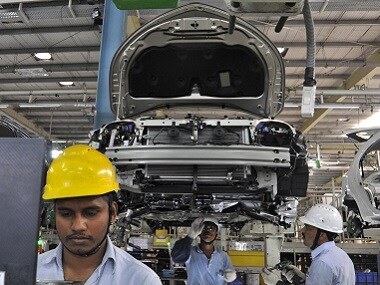This is the first of a two-part column on motor accidents Let me introduce you to a (juristic) person I’ve recently got to know a little better. His name is ARAI, aka Automotive Research Association of India. He lives in Pune and gets to decide how safe your car is. All those cars you read about that failed NCAP’s safety tests? That pileup on the Mumbai-Pune Expressway that killed 17 people? ARAI had a hand in the ‘safety’ of all those vehicles, because the law requires him to. Rules 126 and 126A of the Central Motor Vehicle Rules stipulate that the prototype of every vehicle manufactured in India or imported to India must go to a Central Government-designated agency for testing. The tests are to ensure cars sold in India comply with the norms laid down by the Automotive Industry Standard Committee (AISC), which among other things, sets safety standards to be followed by auto manufacturers selling their vehicles in India. [caption id=“attachment_2842996” align=“alignleft” width=“380”]  Representational image. Reuters[/caption] What is interesting is that ARAI is a Society registered under the Societies Registration Act. That legal character is significant, because the members of this Society include virtually all major auto manufacturers in the country: everyone from Maruti-Suzuki, Bajaj and Hyundai to Ford and Volvo. This means that ARAI, unlike, say, a municipal corporation, is not a public body directly accountable to the citizens of India, but works within the opaque nexus of government-corporate relationships. The membership to this private elite club requires a prospective applicant to have a Rs 5 crore turnover in the previous financial year. Even more interesting is the relationship between AISC and ARAI: ARAI is the ‘secretariat’ of AISC! Among the fundamental rules a law student first learns is that one can’t (or at least shouldn’t) be a judge in one’s own cause. But today, every automobile manufacturer in India is precisely that, because they are themselves in charge of deciding how safe Indian cars get to be. Should it, then, come as any surprise that car manufacturers think that crashing cars at high speeds for testing is ‘unnecessary’, as average speeds in India are not comparable to those in Europe? Even if we assume that since the standards to be complied with are stipulated by the Central Government, which by definition should be interested in the safety of its citizens, is it really wise to entrust the compliance of these standards to automobile manufacturers in a famously ‘price sensitive’ market like India? After all, we must accept that safety is expensive. So far, manufacturers have passed this burden onto consumers. But what if they were required, by law, to pick up the safety tab themselves? Even if consumers are paying extra for safety, is there any real guarantee that manufacturers don’t cut corners in order to preserve their margins? Take the Janhavi Gadkar case. (Disclaimer: Though I’m also a lawyer, I do not know her personally and this article shouldn’t be construed as an apology for her alleged actions.) She was driving a brand new Audi Q3. She escaped with a broken arm. The two people who died were in a Maruti Eeco. Would the outcome have been different if the Eeco came with dual airbags, not because the taxi driver was forced to pay extra for them, but because the law required it? Note that this example is illustrative; it is not a criticism of an individual manufacturer’s choice in design of a particular vehicle. What needs to be emphasised is that this is a systemic flaw that needs to be urgently rectified by our government. Provisional data under review at the Ministry of Road Transport and Highways indicates a further increase of road deaths from 1,39,671 in 2014 to over 1,46,000 persons killed in 2015. How much longer can India afford to entrust the safety of its cars to car companies? Samarth Moray practises in the Bombay High Court.
ARAI is not a public body directly accountable to the citizens of India, but works within the opaque nexus of government-corporate relationships.
Advertisement
End of Article


)

)
)
)
)
)
)
)
)



